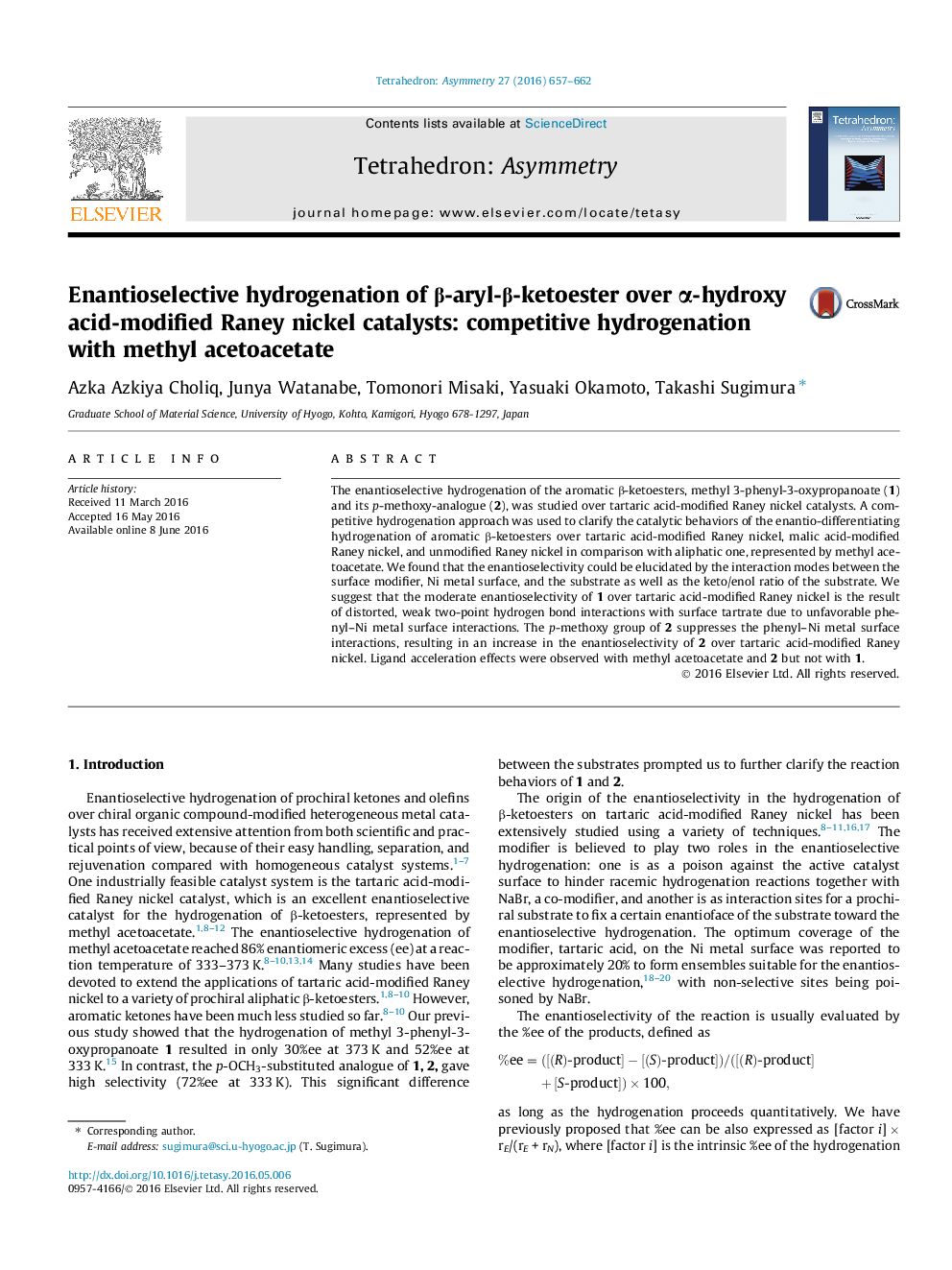| Article ID | Journal | Published Year | Pages | File Type |
|---|---|---|---|---|
| 1343347 | Tetrahedron: Asymmetry | 2016 | 6 Pages |
The enantioselective hydrogenation of the aromatic β-ketoesters, methyl 3-phenyl-3-oxypropanoate (1) and its p-methoxy-analogue (2), was studied over tartaric acid-modified Raney nickel catalysts. A competitive hydrogenation approach was used to clarify the catalytic behaviors of the enantio-differentiating hydrogenation of aromatic β-ketoesters over tartaric acid-modified Raney nickel, malic acid-modified Raney nickel, and unmodified Raney nickel in comparison with aliphatic one, represented by methyl acetoacetate. We found that the enantioselectivity could be elucidated by the interaction modes between the surface modifier, Ni metal surface, and the substrate as well as the keto/enol ratio of the substrate. We suggest that the moderate enantioselectivity of 1 over tartaric acid-modified Raney nickel is the result of distorted, weak two-point hydrogen bond interactions with surface tartrate due to unfavorable phenyl–Ni metal surface interactions. The p-methoxy group of 2 suppresses the phenyl–Ni metal surface interactions, resulting in an increase in the enantioselectivity of 2 over tartaric acid-modified Raney nickel. Ligand acceleration effects were observed with methyl acetoacetate and 2 but not with 1.
Graphical abstractFigure optionsDownload full-size imageDownload as PowerPoint slide
Methyl (R)-3-hydroxybutyrateC5H10O386%ee[α]D20 = −19.7 (neat)Source of chirality: (R,R)-tartaric acid modifiedRaney nickel catalystAbsolute configuration (R)
Methyl (S)-3-phenyl-3-oxypropanoateC10H12O352%ee[α]D20 = −8.5 (c 1.0, ethanol)Source of chirality: (R,R)-tartaric acid modifiedRaney nickel catalystAbsolute configuration (S)
Methyl (S)-3-p-methoxyphenyl-3-oxypropanoateC11H14O472%ee[α]D20 = −27.7 (c 0.5, CHCl3)Source of chirality: (R,R)-tartaric acid modifiedRaney nickel catalystAbsolute configuration (S)
